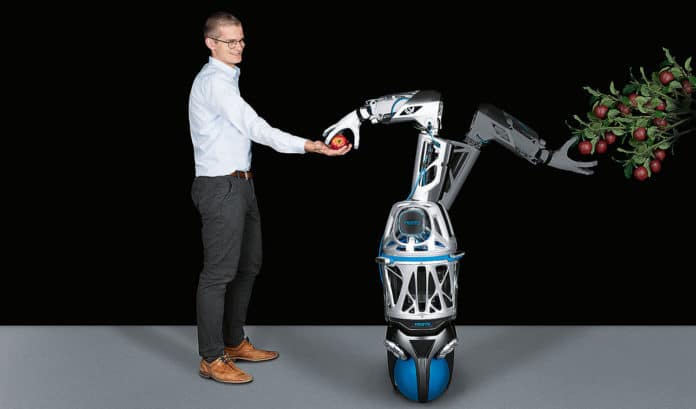Industrial change requires a new kind of interaction between people, machines, and data. Workers and robots will work together more and more closely in the future. Festo has presented its latest bionics intended to help its clients in this industrial transformation. The German-based company has come up with two robot systems – the feathered BionicSwift and the BionicMobileAssistant – the absurd moving arm that will attract attention.
Festo’s BionicMobileAssistant is basically a prototype of a robot system that moves independently in three dimensions and can identify objects, grip adaptively, and work together with humans. Developed in collaboration with ETH Zurich, the robot has a modular design and consists of three subsystems: a mobile robot on a spherical wheel (ballbot), an electric robotic arm, and the new BionicSoftHand 2.0, a pneumatic gripper inspired by the human hand. The ballbot base keeps its balance very well and allows it to move in any direction easily.
The BionicSoftHand 2.0 can carry out the movements of the human hand in a lifelike manner, thanks to the compact valve technology, sensors, electronics, and mechanical components integrated into the tightest of spaces. The fingers and the opposable thumb are made of flexible bellows structures with air chambers encased in a firm yet flexible knitted fabric.
The developers greatly increased the lateral swivel range of both fingers to extend the maneuverability of the thumb and index finger compared with the first version of the BionicSoftHand. The hand can also move both back and forth as well as to the left and to the right, thanks to a 3D-printed wrist rocking two degrees of freedom.
It is built on artificial intelligence and can detect objects around it with tactile sensors and a special camera on the inside of the wrist.
The BionicMobileAssistant would be perfect for use as a direct assistant for people, for instance, as a service robot, as a helping hand in assembly or to assist workers in carrying out ergonomically strenuous or monotonous tasks. It could also be used in maintenance or repair work, data measurements, or visual inspections. You could also imagine that mobile robots take on the simplest tasks in areas where there is an increased risk of infection or a shortage of personnel due to infections.
